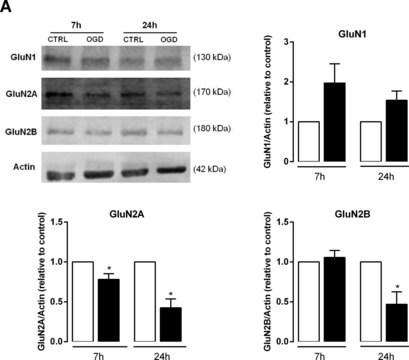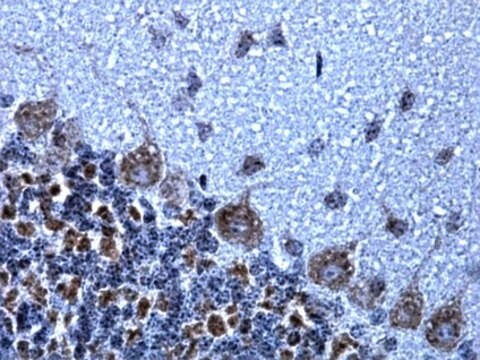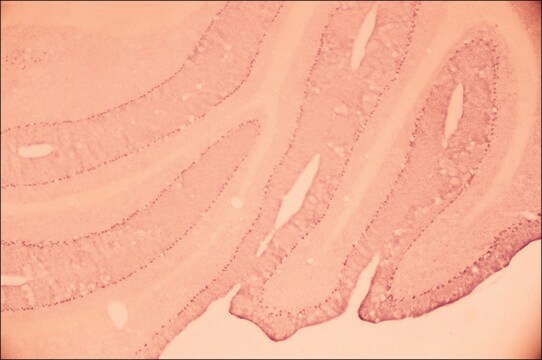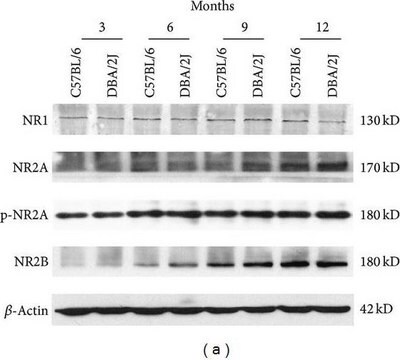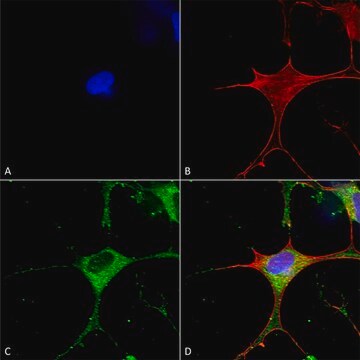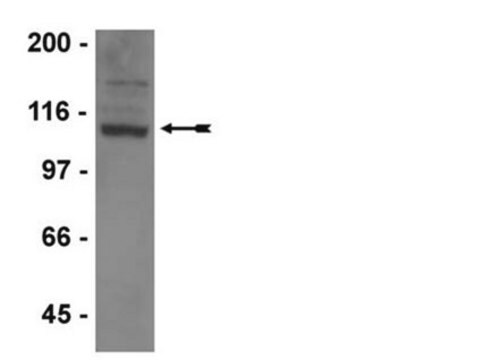AB9864
Anti-NMDAR1 Antibody, rabbit monoclonal
culture supernatant, clone 1.17.2.6, Chemicon®
Sinónimos:
N-methyl-D-aspartate receptor channel, subunit zeta-1, N-methyl-D-aspartate receptor subunit NR1, NMDA receptor 1, glutamate [NMDA] receptor subunit zeta 1, glutamate receptor, ionotropic, N-methyl D-aspartate 1
About This Item
Productos recomendados
origen biológico
rabbit
Nivel de calidad
forma del anticuerpo
culture supernatant
tipo de anticuerpo
primary antibodies
clon
1.17.2.6, monoclonal
reactividad de especies
rat
fabricante / nombre comercial
Chemicon®
técnicas
immunohistochemistry: suitable
western blot: suitable
isotipo
IgG
Nº de acceso NCBI
Nº de acceso UniProt
Condiciones de envío
wet ice
modificación del objetivo postraduccional
unmodified
Información sobre el gen
rat ... Gpr132(314480)
Descripción general
Especificidad
Inmunógeno
Aplicación
AB9864 can be used for using 4% paraformaldehyde or paraformaldehyde/glutaraldehyde fixed rat tissue. Suggested working dilution for light microscopy is 1:1,000-1:2,000.
Western blot:
1:1,000-1:2,000 using ECL on rat brain lysate.
Optimal working dilutions must be determined by end user.
Neuroscience
Neurotransmitters & Receptors
Calidad
Western Blot Analysis:
1:1000 dilution of this lot detected NMDAR1 on 10 μg of rat brain lysates
Descripción de destino
Ligadura / enlace
Forma física
Almacenamiento y estabilidad
Nota de análisis
Brain tissue
Otras notas
Información legal
Cláusula de descargo de responsabilidad
¿No encuentra el producto adecuado?
Pruebe nuestro Herramienta de selección de productos.
Código de clase de almacenamiento
12 - Non Combustible Liquids
Clase de riesgo para el agua (WGK)
WGK 2
Certificados de análisis (COA)
Busque Certificados de análisis (COA) introduciendo el número de lote del producto. Los números de lote se encuentran en la etiqueta del producto después de las palabras «Lot» o «Batch»
¿Ya tiene este producto?
Encuentre la documentación para los productos que ha comprado recientemente en la Biblioteca de documentos.
Nuestro equipo de científicos tiene experiencia en todas las áreas de investigación: Ciencias de la vida, Ciencia de los materiales, Síntesis química, Cromatografía, Analítica y muchas otras.
Póngase en contacto con el Servicio técnico